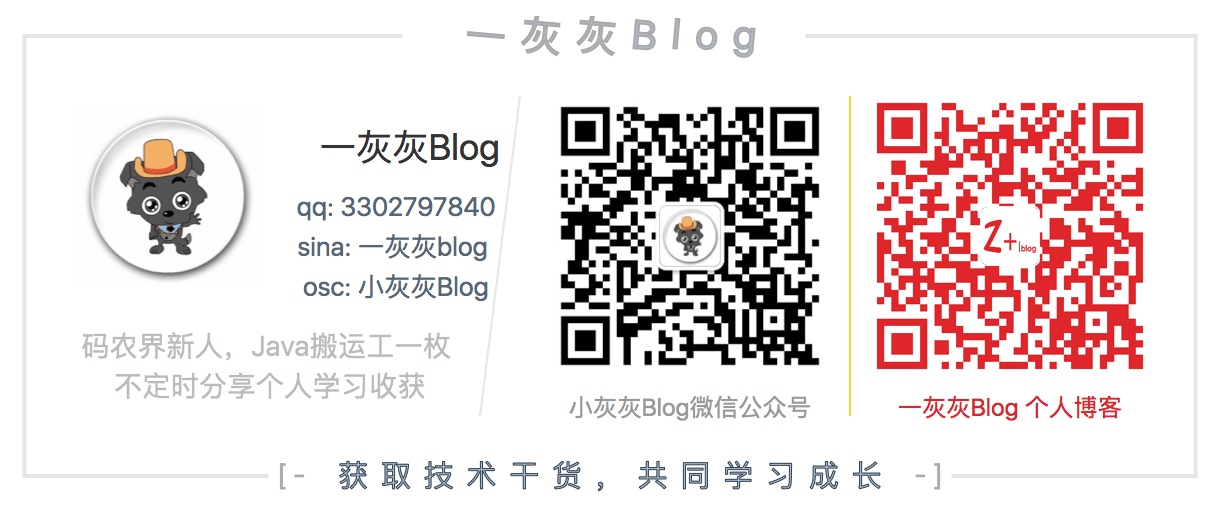6. Spring&JavaConfig使用篇
RabbitMQ基础教程之Spring使用篇
相关博文,推荐查看:
在实际的应用场景中,将RabbitMQ和Spring结合起来使用的时候可能更加频繁,网上关于Spring结合的博文中,大多都是xml的方式,这篇博文,则主要介绍下利用JavaConfig的结合,又会是怎样的
I. Spring中RabbitMQ的基本使用姿势
1. 准备
开始之前,首先添加上必要的依赖,主要利用 spring-rabbit 来实现,这个依赖中,内部又依赖的Spring相关的模块,下面统一改成5.0.4版本
<dependencies>
<dependency>
<groupId>org.projectlombok</groupId>
<artifactId>lombok</artifactId>
<version>1.16.20</version>
</dependency>
<dependency>
<groupId>org.springframework.amqp</groupId>
<artifactId>spring-rabbit</artifactId>
<version>1.7.3.RELEASE</version>
</dependency>
<dependency>
<groupId>org.springframework</groupId>
<artifactId>spring-context</artifactId>
<version>5.0.4.RELEASE</version>
</dependency>
<dependency>
<groupId>org.springframework</groupId>
<artifactId>spring-test</artifactId>
<version>5.0.4.RELEASE</version>
</dependency>
<dependency>
<groupId>org.springframework</groupId>
<artifactId>spring-core</artifactId>
<version>5.0.4.RELEASE</version>
</dependency>
<dependency>
<groupId>junit</groupId>
<artifactId>junit</artifactId>
<version>4.12</version>
<scope>test</scope>
</dependency>
</dependencies>
流程分析
实现主要分为两块,一个是投递服务,一个是消费服务,结合前面RabbitMQ的基本使用姿势中的流程,即便是使用Spring,我们也避免不了下面几步
- 建立连接
- 声明Exchange ,声明Queue
- 建立Queue和Exchange之间的绑定关系
- 发送消息
- 消费消息(ack/nak)
2. 基本case
首先借助Spring,来实现一个最基本的最简单的实现方式
/**
* Created by yihui in 19:53 18/5/30.
*/
public class SimpleProducer {
public static void main(String[] args) throws InterruptedException {
CachingConnectionFactory factory = new CachingConnectionFactory("127.0.0.1", 5672);
factory.setUsername("admin");
factory.setPassword("admin");
factory.setVirtualHost("/");
RabbitAdmin admin = new RabbitAdmin(factory);
// 创建队列
Queue queue = new Queue("hello", true, false, false, null);
admin.declareQueue(queue);
//创建topic类型的交换机
TopicExchange exchange = new TopicExchange("topic.exchange");
admin.declareExchange(exchange);
//交换机和队列绑定,路由规则为匹配"foo."开头的路由键
admin.declareBinding(BindingBuilder.bind(queue).to(exchange).with("foo.*"));
//设置监听
SimpleMessageListenerContainer container = new SimpleMessageListenerContainer(factory);
Object listener = new Object() {
public void handleMessage(String foo) {
System.out.println(" [x] Received '" + foo + "'");
}
};
MessageListenerAdapter adapter = new MessageListenerAdapter(listener);
container.setMessageListener(adapter);
container.setQueues(queue);
container.start();
//发送消息
RabbitTemplate template = new RabbitTemplate(factory);
template.convertAndSend("topic.exchange", "foo.bar", "Hello, world!");
Thread.sleep(1000);
// 关闭
container.stop();
}
}
3. 逻辑分析
上面这一段代码中,包含了消息投递和消费两块,从实现而言,基本上逻辑和前面的基础使用没有什么太大的区别,步骤如下:
- 建立连接:
new CachingConnectionFactory("127.0.0.1", 5672) - 声明Queue:
new Queue("hello", true, false, false, null) - 声明Exchange:
new TopicExchange("topic.exchange") - 绑定Queue和Exchange:
admin.declareBinding(BindingBuilder.bind(queue).to(exchange).with("foo.*")); - 投递消息:
template.convertAndSend("topic.exchange", "foo.bar", "Hello, world!"); - 消费消息: 设置
MessageListenerAdapter
这里面有几个类需要额外注意:
- RabbitTemplate: Spring实现的发送消息的模板,可以直接发送消息
- SimpleMessageListenerContainer: 注册接收消息的容器
II. Spring结合JavaConfig使用RabbitMQ使用姿势
1. 公共配置
主要是将公共的ConnectionFactory 和 RabbitAdmin 抽取出来
@Configuration
@ComponentScan("com.git.hui.rabbit.spring")
public class SpringConfig {
private Environment environment;
@Autowired
public void setEnvironment(Environment environment) {
this.environment = environment;
System.out.println("then env: " + environment);
}
@Bean
public ConnectionFactory connectionFactory() {
CachingConnectionFactory factory = new CachingConnectionFactory();
factory.setHost("127.0.0.1");
factory.setPort(5672);
factory.setUsername("admin");
factory.setPassword("admin");
factory.setVirtualHost("/");
return factory;
}
@Bean
public RabbitAdmin rabbitAdmin(ConnectionFactory connectionFactory) {
return new RabbitAdmin(connectionFactory);
}
}
2. 消息投递
发送消息的组件就比较简单了,直接利用 AmqpTemplate 即可
@Component
public class AmqpProducer {
private AmqpTemplate amqpTemplate;
@Autowired
public void amqpTemplate(ConnectionFactory connectionFactory) {
amqpTemplate = new RabbitTemplate(connectionFactory);
}
/**
* 将消息发送到指定的交换器上
*
* @param exchange
* @param msg
*/
public void publishMsg(String exchange, String routingKey, Object msg) {
amqpTemplate.convertAndSend(exchange, routingKey, msg);
}
}
3. DirectExchange消息消费
根据不同的Exchange类型,分别实现如下
DirectExchange方式
@Configuration
public class DirectConsumerConfig {
@Autowired
private ConnectionFactory connectionFactory;
@Autowired
private RabbitAdmin rabbitAdmin;
@Bean
public DirectExchange directExchange() {
DirectExchange directExchange = new DirectExchange("direct.exchange");
directExchange.setAdminsThatShouldDeclare(rabbitAdmin);
return directExchange;
}
@Bean
public Queue directQueue() {
Queue queue = new Queue("aaa");
queue.setAdminsThatShouldDeclare(rabbitAdmin);
return queue;
}
@Bean
public Binding directQueueBinding() {
Binding binding = BindingBuilder.bind(directQueue()).to(directExchange()).with("test1");
binding.setAdminsThatShouldDeclare(rabbitAdmin);
return binding;
}
@Bean
public ChannelAwareMessageListener directConsumer() {
return new BasicConsumer("direct");
}
@Bean(name = "directMessageListenerContainer")
public MessageListenerContainer messageListenerContainer() {
SimpleMessageListenerContainer container = new SimpleMessageListenerContainer();
container.setConnectionFactory(connectionFactory);
container.setRabbitAdmin(rabbitAdmin);
container.setQueues(directQueue());
container.setPrefetchCount(20);
container.setAcknowledgeMode(AcknowledgeMode.AUTO);
container.setMessageListener(directConsumer());
return container;
}
}
从上面的实现,基本上都是重新定义了一个Queue, Exchange, Binding, MessageListenerContainer(用来监听消息),并将消息的消费抽出了一个公共类
@Slf4j
public class BasicConsumer implements ChannelAwareMessageListener {
private String name;
public BasicConsumer(String name) {
this.name = name;
}
@Override
public void onMessage(Message message, Channel channel) throws Exception {
try {
byte[] bytes = message.getBody();
String data = new String(bytes, "utf-8");
System.out.println(name + " data: " + data + " tagId: " + message.getMessageProperties().getDeliveryTag());
} catch (Exception e) {
log.error("local cache rabbit mq localQueue error! e: {}", e);
}
}
}
4. 测试
@RunWith(SpringJUnit4ClassRunner.class)
@ContextConfiguration(classes = SpringConfig.class)
public class SprintUnit {
@Autowired
private AmqpProducer amqpProducer;
@Test
public void testDirectConsumer() throws InterruptedException {
String[] routingKey = new String[]{"hello.world", "world", "test1"};
for (int i = 0; i < 10; i++) {
amqpProducer
.publishMsg("direct.exchange", routingKey[i % 3], ">>> hello " + routingKey[i % 3] + ">>> " + i);
}
System.out.println("-------over---------");
Thread.sleep(1000 * 60 * 10);
}
}
这个测试类中,虽然主要是往MQ中投递消息,但在Spring容器启动之后,接收MQ消息并消费的实际任务,是通过前面的MessageListenerContainer托付给Spring容器了,上面测试执行之后,输出为
direct data: >>> hello test1>>> 2 tagId: 1
direct data: >>> hello test1>>> 5 tagId: 2
direct data: >>> hello test1>>> 8 tagId: 3
5. Topic & Fanout策略
上面的一个写出来之后,再看这两个就比较相似了
@Configuration
public class TopicConsumerConfig {
@Autowired
private ConnectionFactory connectionFactory;
@Autowired
private RabbitAdmin rabbitAdmin;
@Bean
public TopicExchange topicExchange() {
TopicExchange topicExchange = new TopicExchange("topic.exchange");
topicExchange.setAdminsThatShouldDeclare(rabbitAdmin);
return topicExchange;
}
@Bean
public Queue topicQueue() {
Queue queue = new Queue("bbb");
queue.setAdminsThatShouldDeclare(rabbitAdmin);
return queue;
}
@Bean
public Binding topicQueueBinding() {
Binding binding = BindingBuilder.bind(topicQueue()).to(topicExchange()).with("*.queue");
binding.setAdminsThatShouldDeclare(rabbitAdmin);
return binding;
}
@Bean
public ChannelAwareMessageListener topicConsumer() {
return new BasicConsumer("topic");
}
@Bean(name = "topicMessageListenerContainer")
public MessageListenerContainer messageListenerContainer() {
SimpleMessageListenerContainer container = new SimpleMessageListenerContainer();
container.setConnectionFactory(connectionFactory);
container.setRabbitAdmin(rabbitAdmin);
container.setQueues(topicQueue());
container.setPrefetchCount(20);
container.setAcknowledgeMode(AcknowledgeMode.AUTO);
container.setMessageListener(topicConsumer());
return container;
}
}
对应的测试case
@Test
public void testTopicConsumer() throws InterruptedException {
String[] routingKey = new String[]{"d.queue", "a.queue", "cqueue"};
for (int i = 0; i < 20; i++) {
amqpProducer.publishMsg("topic.exchange", routingKey[i % 3], ">>> hello " + routingKey[i % 3] + ">>> " + i);
}
System.out.println("-------over---------");
Thread.sleep(1000 * 60 * 10);
}
广播方式
@Configuration
public class FanoutConsumerConfig {
@Autowired
private ConnectionFactory connectionFactory;
@Autowired
private RabbitAdmin rabbitAdmin;
@Bean
public FanoutExchange fanoutExchange() {
FanoutExchange fanoutExchange = new FanoutExchange("fanout.exchange");
fanoutExchange.setAdminsThatShouldDeclare(rabbitAdmin);
return fanoutExchange;
}
@Bean
public Queue fanoutQueue() {
Queue queue = new Queue("ccc");
queue.setAdminsThatShouldDeclare(rabbitAdmin);
return queue;
}
@Bean
public Binding fanoutQueueBinding() {
Binding binding = BindingBuilder.bind(fanoutQueue()).to(fanoutExchange());
binding.setAdminsThatShouldDeclare(rabbitAdmin);
return binding;
}
@Bean
public ChannelAwareMessageListener fanoutConsumer() {
return new BasicConsumer("fanout");
}
@Bean(name = "FanoutMessageListenerContainer")
public MessageListenerContainer messageListenerContainer() {
SimpleMessageListenerContainer container = new SimpleMessageListenerContainer();
container.setConnectionFactory(connectionFactory);
container.setRabbitAdmin(rabbitAdmin);
container.setQueues(fanoutQueue());
container.setPrefetchCount(20);
container.setAcknowledgeMode(AcknowledgeMode.AUTO);
container.setMessageListener(fanoutConsumer());
return container;
}
}
对应的测试case
@Test
public void testFanoutConsumer() throws InterruptedException {
String[] routingKey = new String[]{"d.queue", "a.queue", "cqueue", "hello.world", "world", "test1"};
for (int i = 0; i < 20; i++) {
amqpProducer
.publishMsg("fanout.exchange", routingKey[i % 6], ">>> hello " + routingKey[i % 6] + ">>> " + i);
}
System.out.println("-------over---------");
Thread.sleep(1000 * 60 * 10);
}
II. 其他
项目地址
一灰灰Blog: https://liuyueyi.github.io/hexblog
一灰灰的个人博客,记录所有学习和工作中的博文,欢迎大家前去逛逛
声明
尽信书则不如,已上内容,纯属一家之言,因个人能力有限,难免有疏漏和错误之处,如发现bug或者有更好的建议,欢迎批评指正,不吝感激
- 微博地址: 小灰灰Blog
- QQ: 一灰灰/3302797840
扫描关注
